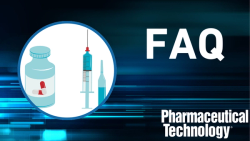
OR WAIT null SECS
- About Us
- Advertise
- Contact Us
- Editorial Info
- Editorial Advisory Board
- Do Not Sell My Personal Information
- Privacy Policy
- Terms and Conditions
© 2025 MJH Life Sciences™ , Pharmaceutical Technology - Pharma News and Development Insights. All rights reserved.
Oncology and Rare Diseases Lead in Innovation
Synthetic biology promises to drive tomorrow’s therapies, while continuous processing is already being used in some new drugs.
Despite the focus on biopharma, small-molecule drug development has continued to drive pharmaceutical innovation. Between 2005 and 2015, the number of new chemical entities (NCEs) doubled from 3000 to over 6000 says Matthew Moorcroft, director of global marketing at Cambrex Labs, quoting numbers from the market research company, Citeline. Last year, 4711 small-molecule drugs made it into clinical trials, a sharp increase from 2014 (Figures 1 and 2).
In biopharma, antibody drug conjugates are an area of increased research activity says Eric Langer, principal of Bioplan Associates. In addition to orphan drugs, there is great interest in oncology, cardiac and diabetes treatments, he says.
In 2015, pipeline innovation focused mainly on oncology drugs, particularly in targeted therapies such as immunotherapies and specific inhibitors, blocking antibodies and receptor agonists (Tables I and II). According to Moorcroft, oncological drugs are the most prevalent in pharma’s pipeline, with over 3000 candidates currently being evaluated in clinical trials. Pain treatments follow, with 349 NCEs in clinical trials, Alzheimers, with 255 in trials, and diabetes, with 187.
The top pharma innovators of 2015, based on NCEs now in development were: AstraZeneca with 100, Merck with 97, Novartis with 96, Roche with 88, GSK with 84, Johnson & Johnson (J&J) with 80, Pfizer with 78, BMS with 67, Lilly with 61, Bayer with 58, and Takeda with 54.
Orphan disease breakthroughs
Another area of focus has been rare or orphan diseases, led by efforts at Genzyme, Shire, and Pfizer. Recent breakthroughs include Alexion Therapeutics’ Kanuma (Sebelipase alfa), the first treatment for lysosomal acid lipase (LAL) deficiency. The drug offers targeted delivery of silent RNA (SiRNA) to allow production of the missing protein in genetically engineered chickens, which produce the protein in their egg whites. The proteins are then extracted and used to treat patients with the disease.
In addition, The European Medicines Agency (EMA) has recommended the first advanced therapy containing stem cells, a therapy called Holoclar, for approval in the European Union. It is used to treat severe limbal stem cell deficiency, a rare disease that results from physical or chemical burns to the eye.
Rare diseases affect 1 in 10 people in the United States, and 300 million around the world. Roughly 7000 rare diseases exist but only 30% have cures. The market in the US has grown from $80 billion in 2009 to over $100 billlon, according to research by L.E.K. Consulting (1).
Encouraged by regulations that offer fast-track review and favor development of drugs for unmet medical needs, rare disease research will benefit from U.S. government funding for precision medicines, which reached $215 million in 2015. Since 1983, $320 million has been awarded to fund studies of rare disease therapies (1).
Rare disease patient organizations have become more powerful in developing new medications. The Cystic Fibrosis Foundation, for example, is funding research at Pfizer and has funded work at Vertex. In 2015, the organization sold its rights to future innovation royalties by Vertex to an investment group for over $3 billion, a sum that the group will use to fund more research.
New platforms for innovation
Immunotherapy continues to dominate recent breakthroughs in oncology drug research. In addition, there is increased use of continuous processing and flow chemistry to make, not only drug substance but drug product, says Jan Ramakers, a consultant based in Edinburgh, Scotland. “It’s not just the small-scale chemistry that is going to continuous processing, but also things like crystallization and formulation.”
Vertex’s new treatment for cystic fibrosis, a combination product called Orkambi, received FDA approval in June 2015. Vertex is now building a facility that will use continuous processing to manufacture the product. According to the
Wall Street Journal, the process allows 100,000 tablets to be made in an hour, rather than the four to six weeks required for traditional batch processing (2). J&J, Novartis, and GSK are also working on continuous processing facilities for their products.
Synthetic biology
Synthetic biology is emerging as a new way to make drug substances and intermediates, Ramakers says. In a twist on conventional biotechnology, this field applies engineering concepts and approaches to biological systems to design new processes and organisms that aren’t found in nature.
Editing the human genome by harnessing CRISPR
Within the past few years, synthetic biology has yielded a platform called Clustered Regularly Interspaced Short Palindromic Repeats (CRISPR), which is being developed to enable human genome editing. Originally discovered by researchers in the food industry, the platform has enormous potential in medical research and many other applications as well.
Using the approach, one can geneate an RNA sequence matching the DNA sequence of interest (e.g., within a cell). This guide RNA can then move into the cell, where it can be used to silence a specific gene, or change its sequence in the genome, effectively editing it.
Three different organizations currently own intellectual property for CRISPR. Companies such as Editas Medicine, Intellia Therapeutics, Caribou and Eligo Biosciences are working on therapeutic R&D in this area. Among the pharma companies actively investigating CRISPR’s potential are Vertex, Novartis, and AstraZeneca.
References
1. R. Tzeng et al.,
L.E.K. Executive Insights 2014; Vol XVI, Issue 9.
2. S. Ayme, S. Lau, L. et al, State of Play with Research in the Field of Rare Diseases: 2014-2015, The International Rare Diseases Research Consortiaum, September 2015, accessed December 28, 2015.
Article DetailsPharmaceutical Technology
Vol. 40, No. 1
Pages: 22–24
Citation:
When referring to this article, please cite it as A. Shanley, "Oncology and Rare Diseases Lead in Innovation," Pharmaceutical Technology 40 (1) 2016.
Related Content:



